
Pietism, also known as Pietistic Lutheranism, is a movement within Lutheranism that combines its emphasis on biblical doctrine with an emphasis on individual piety and living a vigorous Christian life. It is also related to its non-Lutheran Radical Pietism offshoot that either diversified or spread into various denominations or traditions, and has also had a contributing influence over the interdenominational Evangelical Christianity movement.
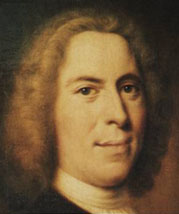
Nikolaus Ludwig, Reichsgraf von Zinzendorf und Pottendorf was a German religious and social reformer, bishop of the Moravian Church, founder of the Herrnhuter Brüdergemeine, Christian mission pioneer and a major figure of 18th century Protestantism.

"A Mighty Fortress Is Our God" is one of the best known hymns by the reformer Martin Luther, a prolific hymnodist. Luther wrote the words and composed the melody sometime between 1527 and 1529. It has been translated into English at least seventy times and also into many other languages. The words are mostly original, though the first line paraphrases that of Psalm 46.

Catherine Winkworth was an English hymnwriter and educator. She translated the German chorale tradition of church hymns for English speakers, for which she is recognized liturgically by The Episcopal Church and the Evangelical Lutheran Church in America. She also worked for wider educational opportunities for girls, and translated biographies of two founders of religious sisterhoods. When 16, Winkworth appears to have coined a once well-known political pun, peccavi, "I have Sindh", relating to the British occupation of Sindh in colonial India.

Justus Jonas, the Elder, or simply Justus Jonas, was a German Lutheran theologian and reformer. He was a Jurist, Professor and Hymn writer. He is best known for his translations of the writings of Martin Luther and Philipp Melanchthon. He accompanied Martin Luther in his final moments.

August Gottlieb Spangenberg was a German theologian and minister, and a bishop of the Moravian Church. As successor of Count Nicolaus Ludwig Zinzendorf, he helped develop international missions, as well as stabilized the theology and organization of the German Moravian Church.

Bartholomäus Ziegenbalg was a member of the Lutheran clergy and the first Pietist missionary to India.

Johann Heinrich Callenberg was a German Orientalist, Lutheran professor of theology and philology, and promoter of conversion attempts among Jews and Muslims.

The Moravian Church of the British Province is part of the worldwide Moravian Church Unity.
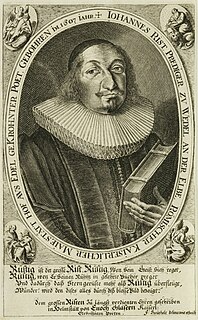
"O Ewigkeit, du Donnerwort" is a Lutheran hymn in German, with text by Johann Rist, first published in Lüneburg in 1642. It was translated into English in several versions. The hymn was used in cantata music, including Bach's first chorale cantata of his second cantata cycle, BWV 20.

Christianity in the 18th century is marked by the First Great Awakening in the Americas, along with the expansion of the Spanish and Portuguese empires around the world, which helped to spread Catholicism.
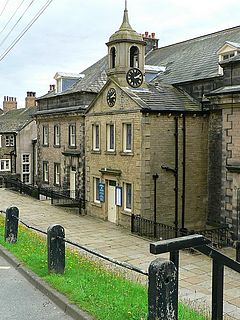
Fulneck Moravian Church and its associated settlement were established on the Fulneck estate, Pudsey, in the West Riding of Yorkshire, England, in 1744 by Count Nicolaus Ludwig von Zinzendorf, a Moravian Bishop and Lutheran priest, following a donation of land by the evangelical Anglican clergyman, Benjamin Ingham. Fulneck is now part of the City of Leeds, West Yorkshire.

Johann Joachim Lange was a German Protestant theologian and philosopher.
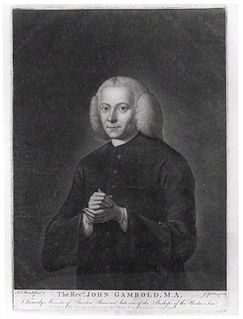
John Gambold, was bishop of the Unitas Fratrum.

The Reverend Friedrich Michael Ziegenhagen was a German-English clergyman, who worked as a court preacher for the Hanoverian King George I of Great Britain. At the same time, he was a prominent Pietist and one of the most prominent members of the Society for Promoting Christian Knowledge (SPCK).

Anton Wilhelm Böhme was a German Lutheran royal chaplain at St. James's Palace in London. He is known as an author and translator.
"Nun lob, mein Seel, den Herren" is a Lutheran hymn written in German by the theologian and reformer Johann Gramann in 1525. It was published in 1540 and appears in 47 hymnals. A translation by Catherine Winkworth, "My Soul, now Praise thy Maker!", was published in 1863.
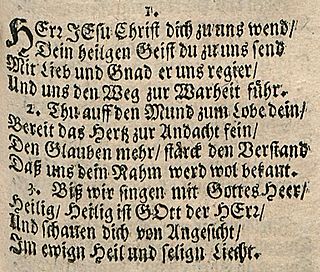
"Herr Jesu Christ, dich zu uns wend" is a Lutheran hymn from the 17th century. Its hymn tune, Zahn No. 624, was adopted in several compositions. It was translated into English and is part of modern hymnals.
"Werde munter, mein Gemüte" is a Lutheran evening hymn by Johann Rist in twelve stanzas of eight lines each, printed in 1642. The hymn was translated to English and appeared in 67 hymnals.
Johann Christian Nehring was a German Rektor, supervisor or orphanages, Lutheran minister and hymnwriter. He is known as the author of hymn stanzas that were included in "Sonne der Gerechtigkeit" in 1932.





















